How “Saltburn” Production Designer Suzie Davies Outfitted the Vast Estate in Emerald Fennell’s Thriller
Like many who worked on Saltburn, production designer Suzie Davies signed a contract promising not to reveal the location of the sprawling country house where much of the movie was shot. Writer/director Emerald Fennell wanted a centuries-old estate unidentifiable to audiences, and she found one in the English Midlands that had never been used onscreen. But a Tatler journalist sleuthed out the location a few months ago, effectively voiding the contracts. Drayton House, a leviathan with aristocratic heritage, is where Davies let her inspiration run wild, bringing Fennell’s story of class intrigue to life.
Davies and her team had the freedom to paint, rearrange rooms, embellish gardens, and find other ways to epitomize the Catton family, an obscenely wealthy but emotionally feverish clan whose bewitching eldest son (Jacob Elordi) invites his obsequious new Oxford buddy (Barry Keoghan) home for a rambling, sordid summer. Saltburn, Drayton’s fictional counterpart, needed to telegraph the Cattons’ decadence inside and out. For Davies, who also designed Mike Leigh’s Mr. Turner and Peterloo, it was a particularly lavish project.
I have to assume that the process of putting together this, or any movie, is very different from the process of putting together a Mike Lee movie.
It couldn’t be more different, although my process of design has changed quite fundamentally since I’ve worked with him. That means more understanding of the actors. The actors are living in my environment, so the more I can understand their process and how their characters develop, the better.
A lot of your work is done before the actors arrive at the set, so how do you marry everything together once they’re there?
It’s about asking the right questions of Emerald. Luckily, with this project, she was the writer as well, so it’s not like I had to go too far. So when I asked, for instance, “How do you imagine [Rosamund Pike’s character] Elsbeth’s bedroom?” I would love to have spoken to Elsbeth, the character, to find that out. I did speak to Rosamund. But the indulgence of a Mike Leigh project is I have six months whilst we’re developing to speak to the actors. On this, I might have six minutes. So, it’s asking her how she imagines Elsbeth’s room. Did they have separate bedrooms? Did she design it? In what year? How long have they been married? It was about the color palettes as well. Those beats are as important as the stage direction, which, because Emerald’s written it, there’s no separation. When you’re scouting, it’s easy to know which direction she’s going.
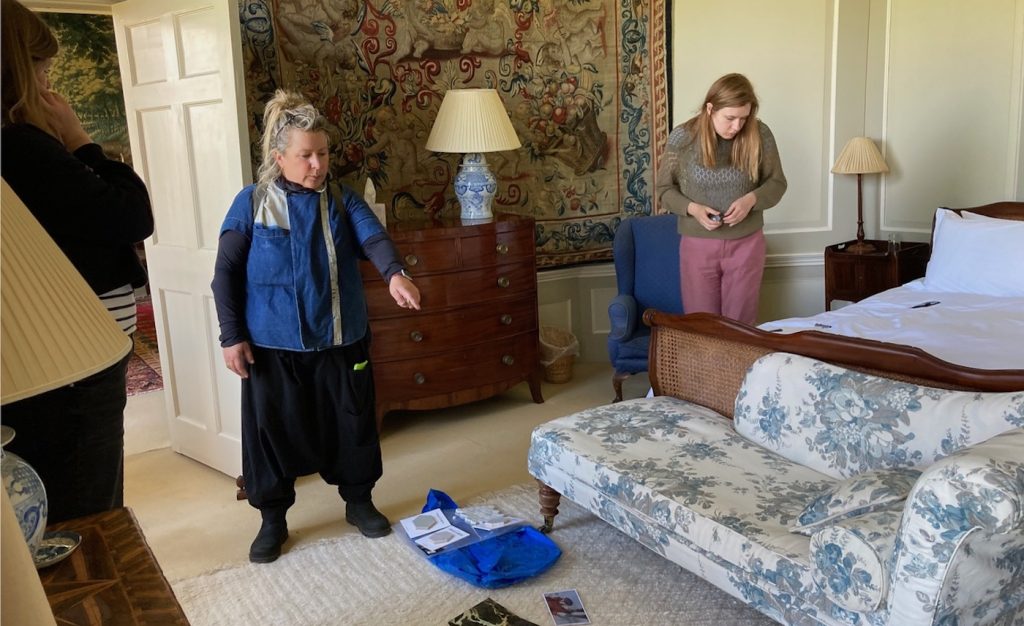
When you first read the script, what immediately sprung to mind in terms of how Saltburn the house should look?
I started immediately pulling images together from all over the place, like country houses. I’ve done lots of period films, and it felt a bit like a period film. It felt like a story could have taken place centuries ago. It was about seeing those period elements in quite a contemporary way. A lot of big National Trust places have really interesting modern art exhibitions, so it’s about bringing a bit of modernism to these aspects. I expected to go scouting for this house for maybe a month, but we probably found it in a week. We found it very quickly.
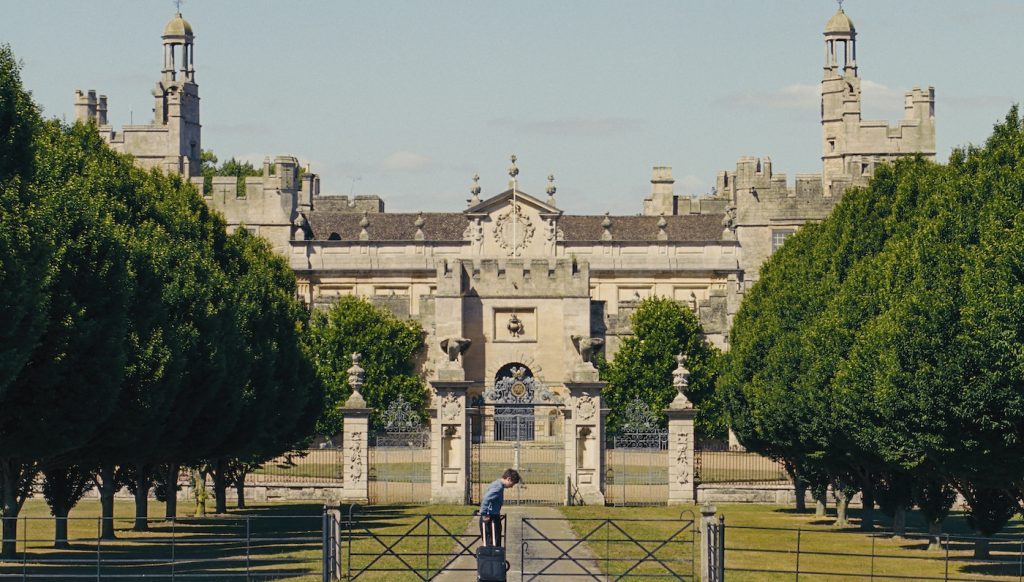
What reference points — photographs, paintings, films — did you use?
Caravaggio is a main player in this film. He often ends up being used as a reference in film because of the cinematic lighting that he used, the intense color, and the darkness mixed with the light. We knew this was going to be quite intense, often sinister, silly, frivolous — all those sorts of emotions. Caravaggio brought that, and that gave us a bit of sincerity and authenticity to the history of his family. We went through the Pre-Raphaelites, with all the silly ponds and all the frivolous nature, and all the way to high-end contemporary art. It was the juxtaposition of having this beautiful, ancient artwork with a purple dress for the parties. We’re often precious about big oil paintings, like, “Oh, you can’t touch them.” We wanted them to feel like they were almost melting, that someone had put a cigarette out on them. Not very respectful. Really lived-in.
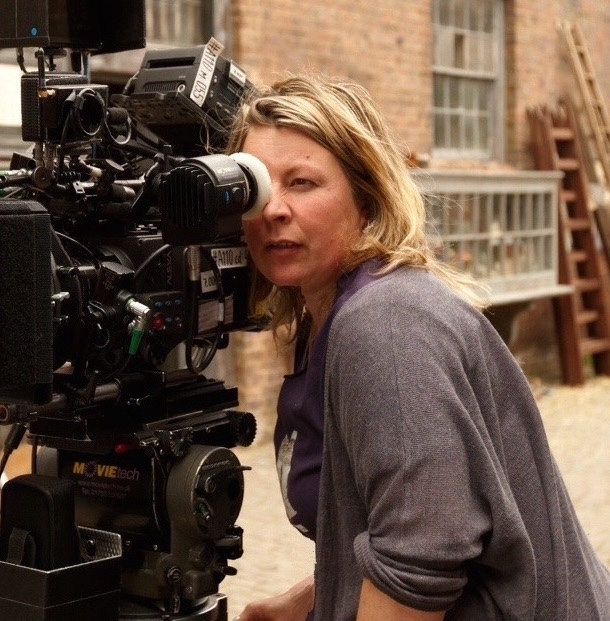
Did you walk through Drayton House before putting together designs?
When we went to the house, it became apparent that that’s where we were going to film it. And then, we were able to manipulate the script to suit elements of the house. The family who own it were very generous to us. They allowed us to augment some rooms, so there’s a run of rooms that I changed around completely. The bathroom isn’t a real bathroom — that was a bedroom. So that’s all fake, but it was in the right place to shoot out of the windows and see the parties and things like that. Often, in stately homes, you can’t touch anything, but we were painting walls and changing fabrics. For the gardens, the maze was a bit of a collaboration between construction and post-production.
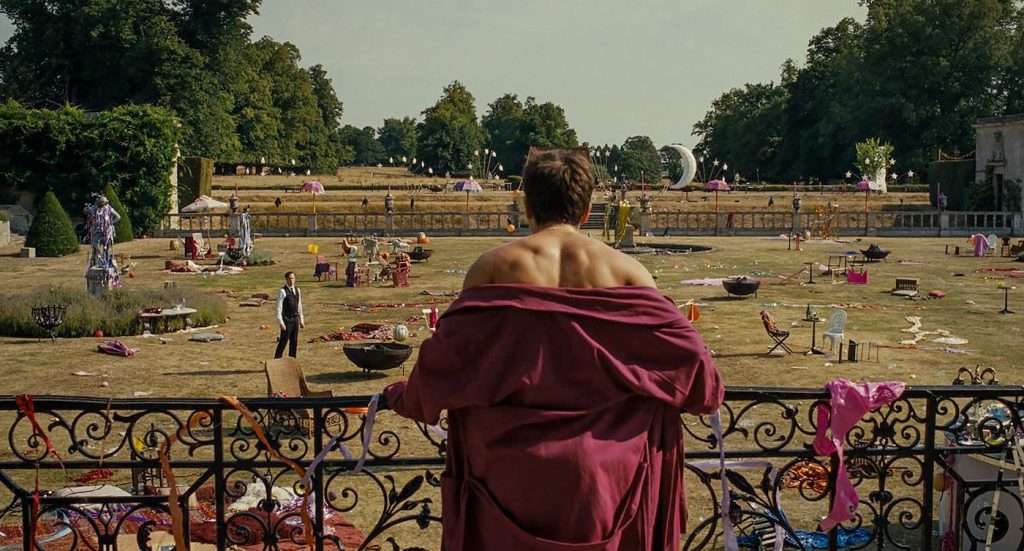
Was the maze built out already?
No, we made the maze. There’s a world-renowned maze designer called Adrian Fisher. He was great because we wanted it to be real. We went through quite a few designs to work out how we’d do it, so it was a perfect filming collaboration of real construction, CG, post-production, editing, and a real designer all mashed up.
We know from Promising Young Woman that Emerald is very particular about the color schemes of her films. What did you and Emerald decide the core color scheme of Saltburn’s interior should be?
Red and green was sort of our go-to, but not on the nose. Amélie is so famous for its red and green, and it was slightly adjusting those colors. It was about getting the intensity. Even in Felix’s bedroom, which I think we see very fleetingly, his bed is like a blueish green. The artwork that we were using has that, too. There’s always this red thread going through. Red is such a beautiful color to play with, especially in cinematic terms. It’s sexy, it’s scary, it’s intense. Every description of the color red was in that film: It’s frivolous, it tastes good. It was about using all our senses, I guess.
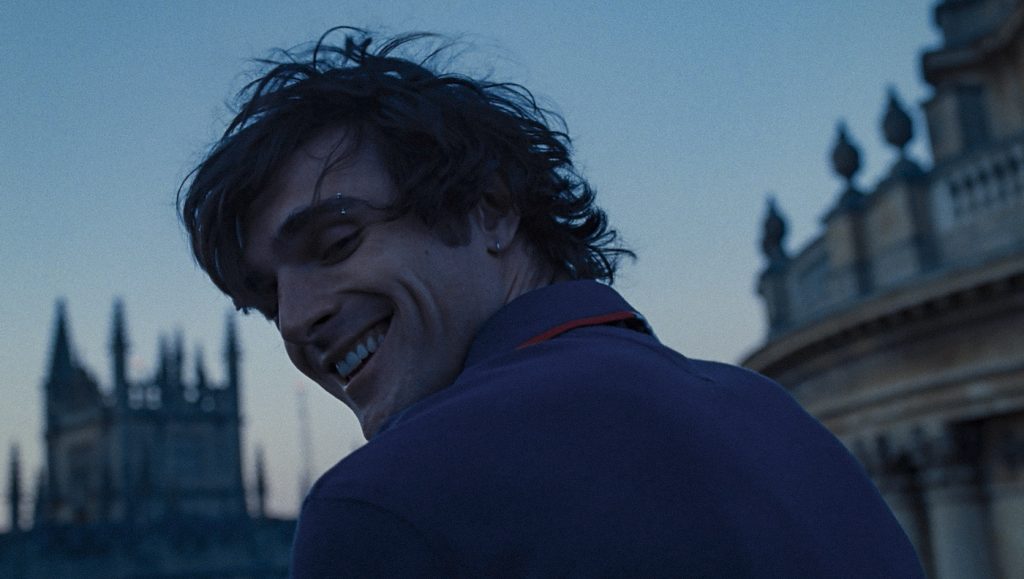
As the film gets darker and more sinister, how did you shift the visual palette to correspond?
It’s a collaboration, with the cinematography becoming darker. As the story unfolds and we get into the party [at the end of the film], that’s when we can go a little bit more intense. I guess we wanted it to feel more distorted and more blurring, like that painting is melting under the heat of the story and the goings-on. Everything starts merging together.
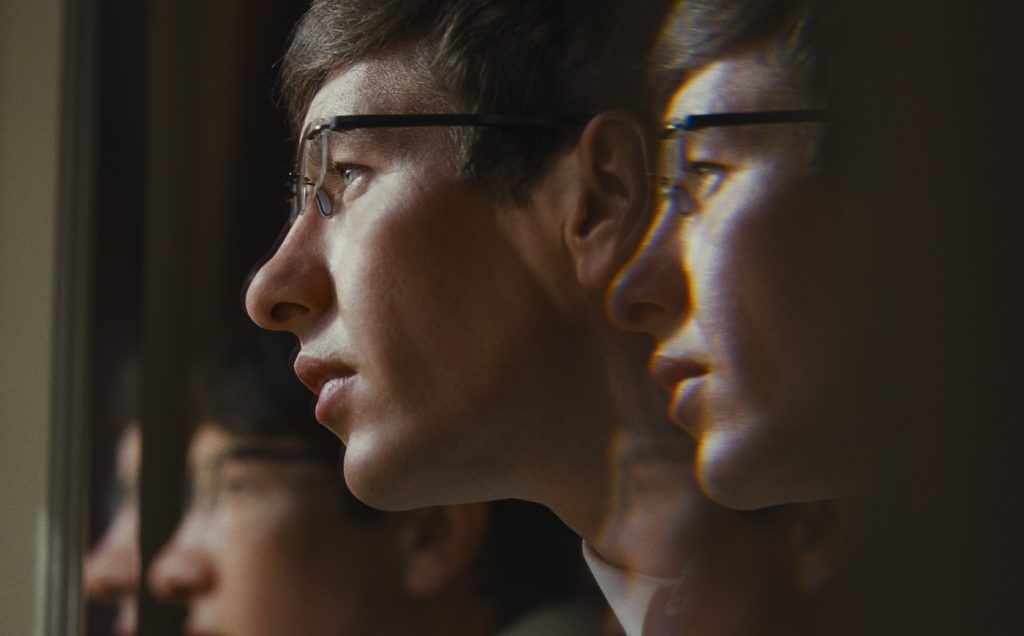
The austerity of the house itself mixed with some of the loud, poppy colors and the candy on the tables reminded me of Marie Antoinette, the Sofia Coppola movie.
I probably did reference that in some of our images. I even looked at The Cook, the Thief, His Wife & Her Lover because that’s so strong with the colors. I think that was too far for us, but it was a bit of inspiration, especially with the over-the-topness of the food — particularly what we call the seafood scene in the big dining room with all those lovely bright-colored candles. That might have been an Emerald decision because I think we had white candles, and she was like, “No, let’s go big.” So we had very tacky sweets with octopus hanging over this gorgeous cut-glass crystal tableware. On set, my art department was constantly getting called all the time for brighter sweets. We had to go down to the sweet shop for more.
There’s that great shot of Barry Keoghan at the table surrounded by candles with his reflection on the glass.
Interestingly, I’ve got images from some of the scouting we did of Emerland or [cinematographer] Linus [Sandgren] or a crew member being put into a position for a shot we wanted to try to get. And they’re in the film. She knew when we were scouting. I’ve got a picture of Linus lying on the floor in the bedroom, à la Jacob Elordi, with the sun coming through. She knew what she wanted.
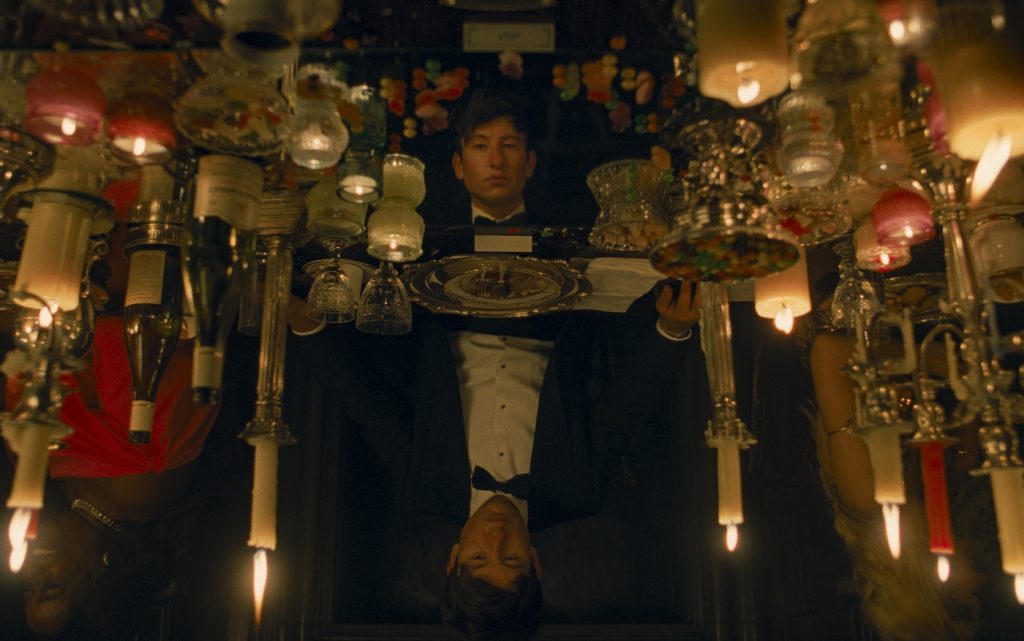
The actors stayed at the house during production so Emerald could create a summer camp feel. Did you and your team?
We were all very close in the village. We all had various houses or hotels. There’s a great pub in the village, so at the end of filming, that’s where we’d go. They must have made a fortune from us that year. They were delightful because it’s quite a sleepy little village, and then you get 100 crew members rocking up. It was fantastic. We had a really hot summer in the UK, which is slightly unheard of, although maybe not now with climate change. But it was one of those jobs that was pretty special. We were quite a tight crew. If the director’s got a good vibe, then it feeds through — and everyone wanted to support the film. You often think you’re doing something special, but I think we knew this film was something different. We were a unit, and it was a really lovely, liberating feeling.
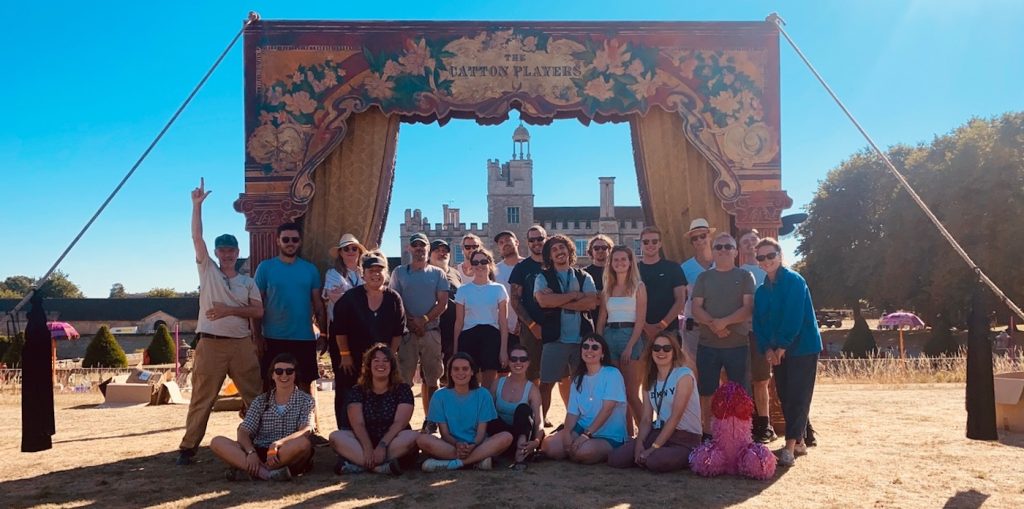
Tell me there was a decadent wrap party at the house when you finished.
It would have been nice. No, there wasn’t. Our schedule didn’t allow it. We had lots of mini-wrap parties at the pub at the end of the day.
Saltburn is in select theaters and streams on Amazon Prime on November 17 and opens wide on Thanksgiving Day.
For more on Amazon Prime Video, check out these stories:
“007: Road to a Million” Trailer Reveals James Bond-Inspired Reality Show Led by Brian Cox
“Air” Costume Designer Charlese Antoinette Jones on Designing the Near-Jordan World of 1980s Nike
“A Million Miles Away” Co-Writer/Director Alejandra Márquez Abella on Capturing a Dream Come True
Featured image: The Saltburn estate. Courtesy MGM and Amazon Studios.



